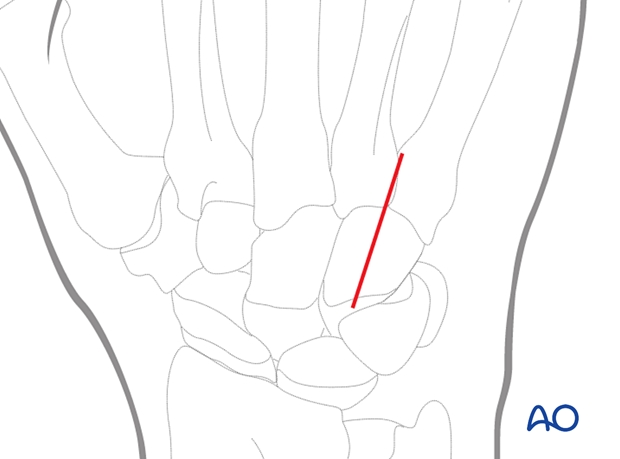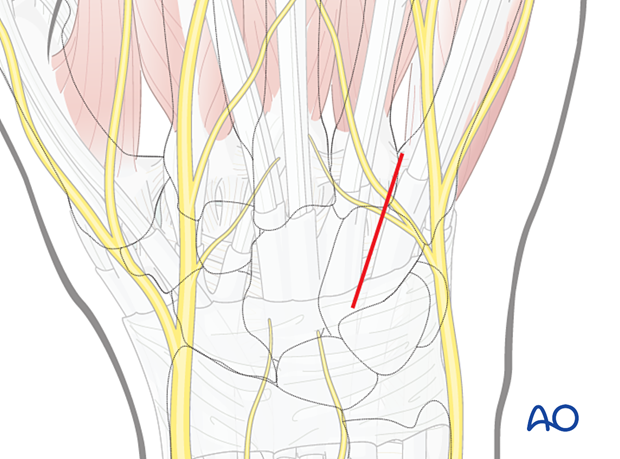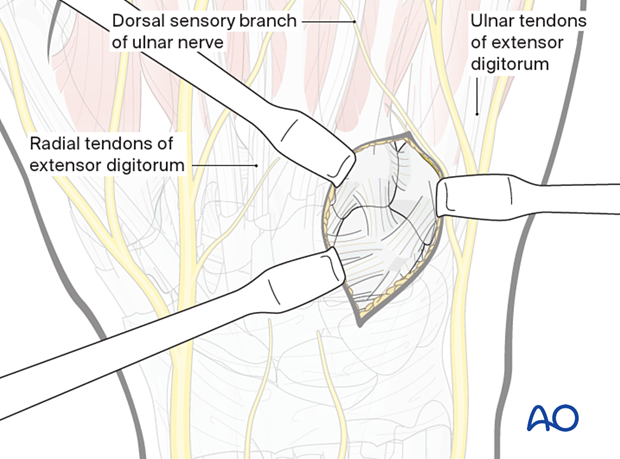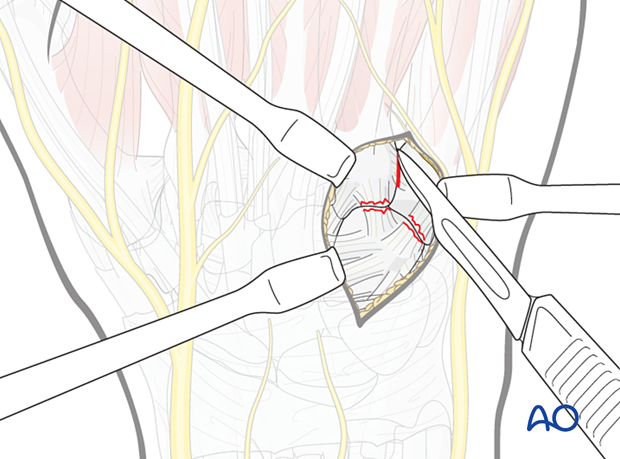Dorsal approach to the carpometacarpal joints
1. Indications
The dorsal approach to the carpometacarpal (CMC) joints is used to expose and remove any obstruction to reduction in dislocations or fracture-dislocations of the CMC joints.

2. Surgical anatomy
The extensor tendons of the 3rd and 4th fingers run dorsally directly over the metacarpals. The extensor tendons of the index and little fingers converge slightly from their metacarpal axes towards the center of the wrist joint.
Be aware of the intertendinous connections, which are located over the distal thirds of the metacarpals.

3. Skin incision
Perform a longitudinal skin incision from the base of the metacarpal to the proximal carpal row between the extensor tendons, centered over the affected CMC joint(s).
If several CMC joints are dislocated an extensile approach is needed, an incision that is centered between the affected joints while respecting the extensor tendons is used.
The approach between the 3rd and 4th CMC joint is shown below.

4. Retraction of extensor tendons
The extensor tendons are retracted radially or ulnarly together with the surrounding loose connective tissue.
Take care to avoid tension of the nerve branches during retraction. Radial sensory branches should be retracted radially and the ulnar sensory branches ulnarly. If necessary, they should be released by wider exposure proximally and distally.

5. Capsulotomy
In acute dislocations, the CMC capsules are often ruptured or avulsed. Further exposure of the joint(s) by surgical extension of the tear may be required.
If partial healing has occurred, as in a chronic case, a formal capsulotomy may be needed.

6. Wound closure
Close and repair the joint capsule with nonabsorbable sutures.
If an intertendinous connection has been cut, it should be repaired.
Close the skin in a standard manner.














